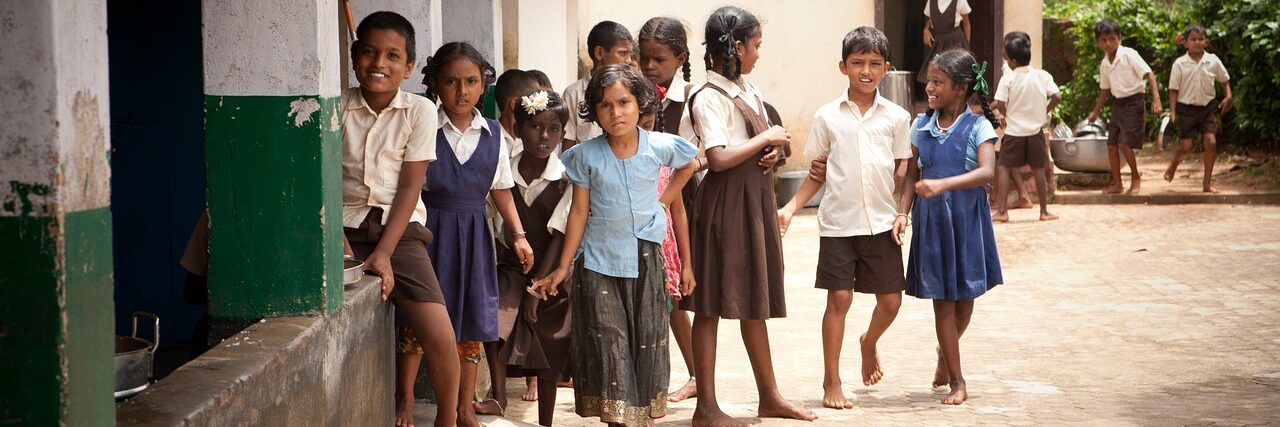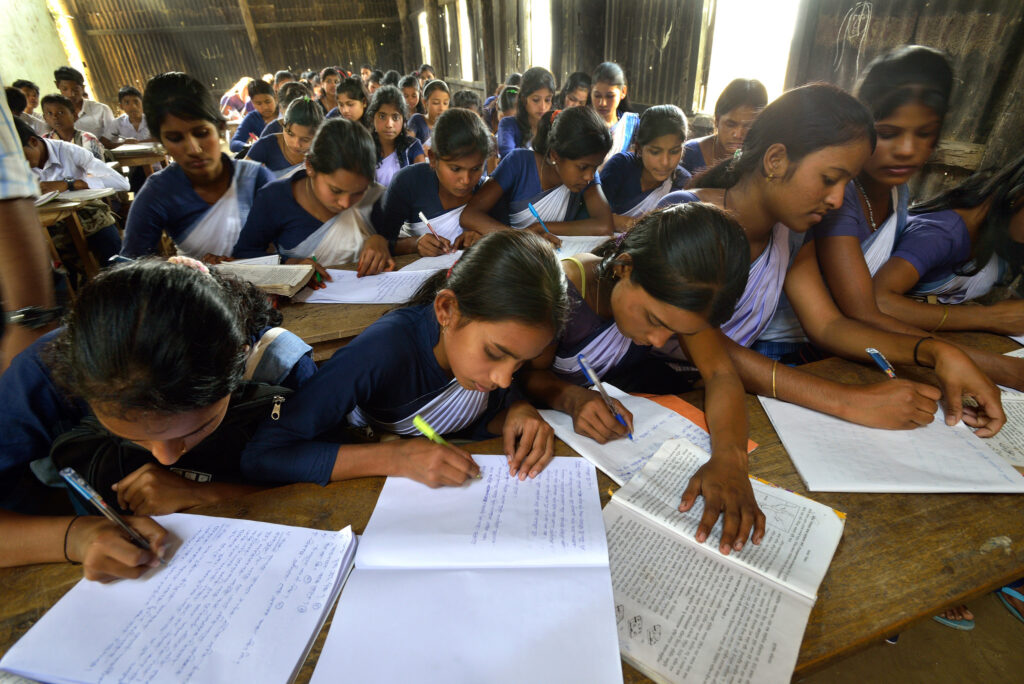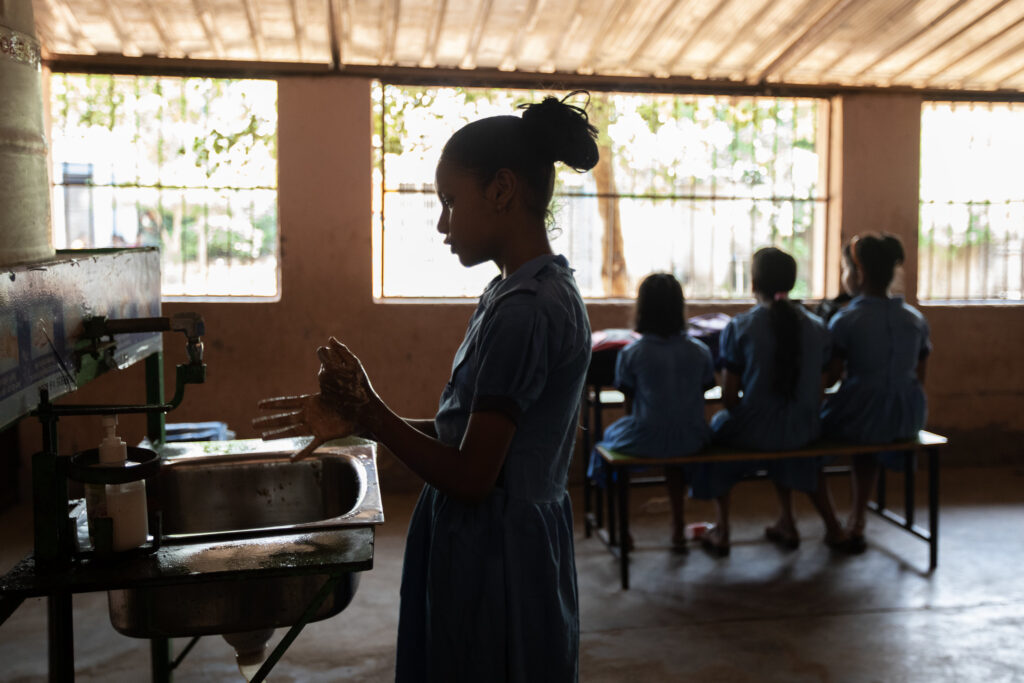Bhiwadi, distrito Khairthal Tijara, Rajasthan, India
In collaboration with

March 2025 – January 2026
We reduce the gap in access to sanitation facilities by ensuring that all students have safe, clean, and dignified access to facilities.
Objectives
- Build hygienic and inclusive sanitation facilities, including handwashing stations, in three schools.
- Raise student awareness of hygiene practices and menstrual health management.
Beneficiaries
354 direct
236 girls and 118 boys, plus 27 school staff members

On the Ground
Schools with inadequate sanitation facilities are experiencing high rates of absenteeism.
Many schools in Bhiwadi, Rajasthan, face significant challenges due to inadequate sanitation infrastructure. The current facilities are not adequate for the number of students in the three selected schools. This shortage results in increased absenteeism and discomfort, which affects not only academic performance but also students’ health and dignity.
Improving sanitation facilities with features that support menstrual hygiene management in these public schools is crucial to ensure a safe and supportive learning environment for girls. Adequate toilets, running water, and separate facilities by gender are essential to address privacy concerns and maintain hygiene.
A child spends a significant amount of time at school, and school infrastructure becomes a key factor in shaping their perception of the world as they grow. Investments in school infrastructure play a crucial role in addressing access issues and improving student performance. Several studies have demonstrated that the physical condition of school buildings has a positive impact on enrollment decisions, reduces dropout rates, and supports school completion.

In Detail
This project addresses the serious lack of adequate sanitation facilities by constructing toilet blocks in three schools in the Tijara block, Khairthal-Tijara District, Rajasthan. It also includes awareness-raising activities on water, hygiene, sanitation, and menstrual health management (MHM) for students.
Project activities follow this sequence:
- Technical assessment to identify needs and establish a baseline.
- Understanding ground realities and local acceptance, including existing infrastructure and available support.
- Orientation, awareness, and training sessions for the school community.
- Construction of sanitation units under the supervision of technical staff to ensure material quality and adherence to the design and construction schedule.
- Monitoring and supervision.
Habitat for Humanity India will ensure regular monitoring through visits and periodic updates. It will also oversee the construction process in coordination with field staff, school authorities, and technical experts.
This project aligns with and supports government initiatives, such as Swachh Bharat: Swachh Vidyalaya Abhiyan and the School Water and Sanitation Towards Health and Hygiene (SWASTHH) program, both of which aim to ensure safe and hygienic sanitation facilities in schools. By promoting sustainable maintenance and behaviour change, the project strengthens the long-term impact of government-led school sanitation programs.

Sustainability Outlook
The sanitation technology used requires low maintenance, is suitable for water-scarce regions, and remains functional even in challenging conditions. Locally sourced materials enable easy repairs and maintenance, thereby reducing dependence on external resources.
Long-term sustainability is ensured through active involvement and ownership by the school authority. Key activities that contribute to the project’s ongoing success include student and family awareness programs and capacity-building initiatives.
In this way, the beneficiary families themselves, together with government programs and school management committees, ensure the technical maintenance of the facilities and fixtures that have been built. Increased awareness and adoption of hygiene and sanitation practices lead to long-term behavioural change, which is the foundation of sustainability.
To ensure clarity of roles and responsibilities, an agreement is signed by the relevant stakeholders. This document outlines:
- Ownership of the sanitation facilities.
- Maintenance guidelines and responsibilities.
- A schedule for regular inspections and monitoring mechanisms.

